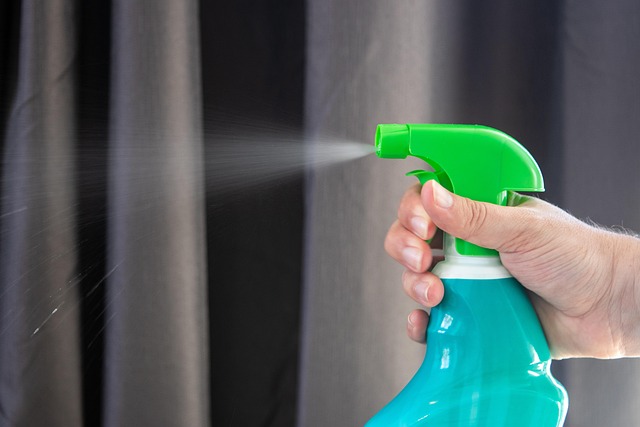Banish Pests: Expert Tips for a Bug-Free Home
Transform your home into a sanctuary free from unwelcome critters. Discover expert strategies to identify, prevent, and eliminate common household pests. Our comprehensive guide offers practical solutions for maintaining a hygienic living space, from DIY techniques to professional interventions. Learn when to tackle pest problems yourself and when to call in the experts, ensuring your home remains a comfortable, pest-free haven.

Keeping your home free from pests is crucial for maintaining a healthy, comfortable living environment. This guide will walk you through identifying common household pests, understanding their entry points, implementing effective control methods, and preventing future infestations.
Common Household Pests and Their Impact
Before diving into control methods, it’s essential to recognize the most frequent intruders:
- Ants: These tiny invaders can contaminate food and cause structural damage.
- Cockroaches: Known carriers of diseases, they thrive in unsanitary conditions.
- Rodents: Mice and rats pose significant health risks and can damage property.
- Bed bugs: These elusive bloodsuckers are notoriously challenging to eradicate.
- Termites: Silent destroyers capable of causing extensive structural harm.
- Flies: Persistent nuisances that can spread numerous diseases.
Identifying the specific pests in your home is crucial for developing an effective control strategy.
Understanding Pest Entry Points
Pests are opportunistic and can exploit various vulnerabilities in your home’s defenses:
- Microscopic openings: Even the tiniest cracks in walls, foundations, or around windows and doors can serve as entry points for insects.
- Unprotected openings: Open doors and windows, especially those without screens, provide easy access for flying insects and rodents.
- Trojan horse entry: Pests often hitch rides on boxes, grocery bags, or even pets.
- Natural bridges: Overgrown vegetation touching your house creates pathways for pests.
- Underground routes: Pests can navigate through pipes and drainage systems to access your living spaces.
Identifying and addressing these potential entry points is key to preventing infestations.
Effective Pest Control Strategies for Homeowners
Homeowners have a variety of options at their disposal for managing pest problems:
- Cleanliness is key: Regular cleaning and proper food storage are your first line of defense.
- Seal the fortress: Conduct routine inspections to identify and seal potential entry points.
- Nature’s deterrents: Certain plants and essential oils can repel specific pests.
- Strategic placement: Traps and baits can effectively control rodents and some insects.
- Chemical warfare: Over-the-counter pesticides can be useful but should be used cautiously and according to instructions.
- Professional reinforcements: For severe or persistent issues, consider hiring a professional pest control service.
A multi-faceted approach combining these methods often yields the best results.
When to Seek Professional Help
While many pest issues can be managed independently, some situations warrant expert intervention:
- Overwhelming numbers: When the infestation is widespread or uncontrollable.
- High-risk intruders: Venomous spiders or aggressive stinging insects require specialized handling.
- Persistent problems: If DIY methods fail after multiple attempts, it’s time to call in the pros.
- Preventive measures: Regular professional treatments can ward off future infestations.
- Health hazards: When pests pose significant health risks to your household.
- Structural threats: If pests like termites or carpenter ants jeopardize your home’s integrity.
Professional pest control services have access to more potent treatments and specialized equipment, making them more effective for serious infestations.
Preventing Future Pest Invasions
Prevention is the most cost-effective and efficient pest control strategy. Here are key preventive measures:
- Maintain cleanliness: Regular cleaning, especially in food preparation and dining areas, is crucial.
- Proper food management: Store food in airtight containers and dispose of garbage promptly.
- Moisture control: Fix leaks and reduce humidity to make your home less inviting to pests.
- Fortify your defenses: Regularly inspect and seal potential entry points around your home.
- Landscape management: Keep vegetation trimmed and away from your house’s exterior.
- Vigilant monitoring: Conduct routine checks for signs of pest activity.
- Proactive treatments: Consider using natural or chemical deterrents around your home’s perimeter.
Implementing these preventive strategies can significantly reduce the likelihood of future pest problems.
Effective pest management is an ongoing process that requires vigilance and a comprehensive approach. By understanding the pests you’re dealing with, implementing preventive measures, and knowing when to seek professional help, you can maintain a pest-free home. Remember, a clean, well-maintained house is your strongest defense against unwanted critters. With the right strategies in place, you can enjoy a comfortable, hygienic living environment free from the nuisance and potential dangers of pest infestations.






